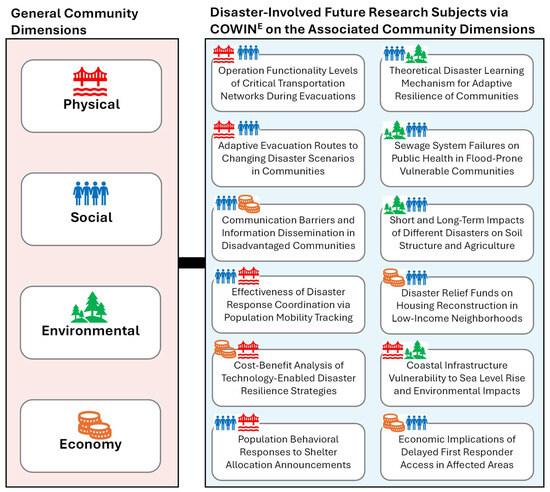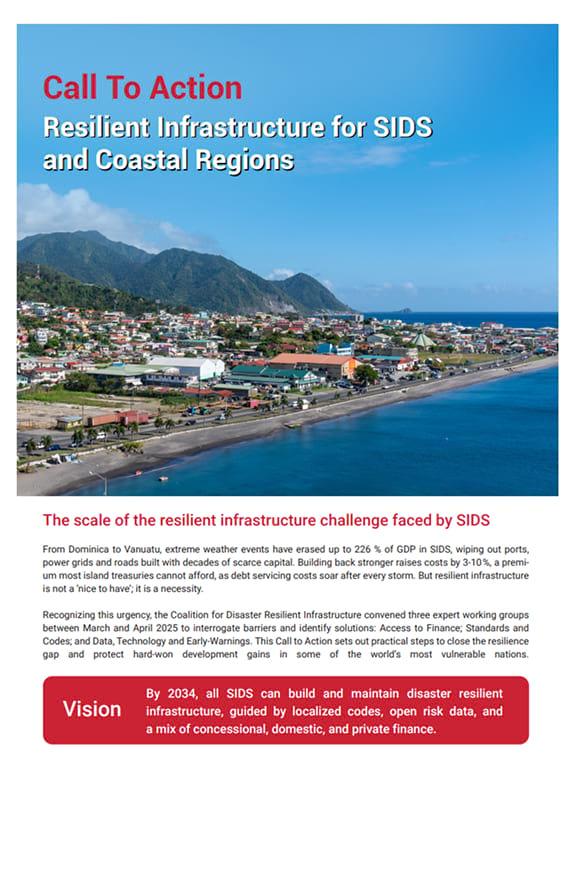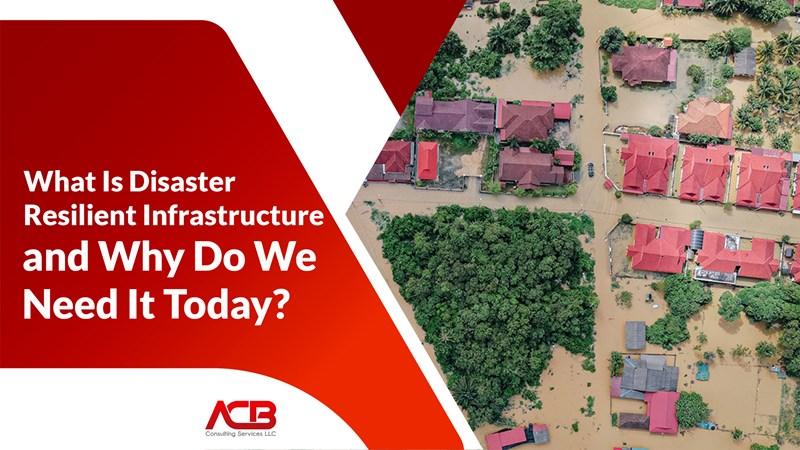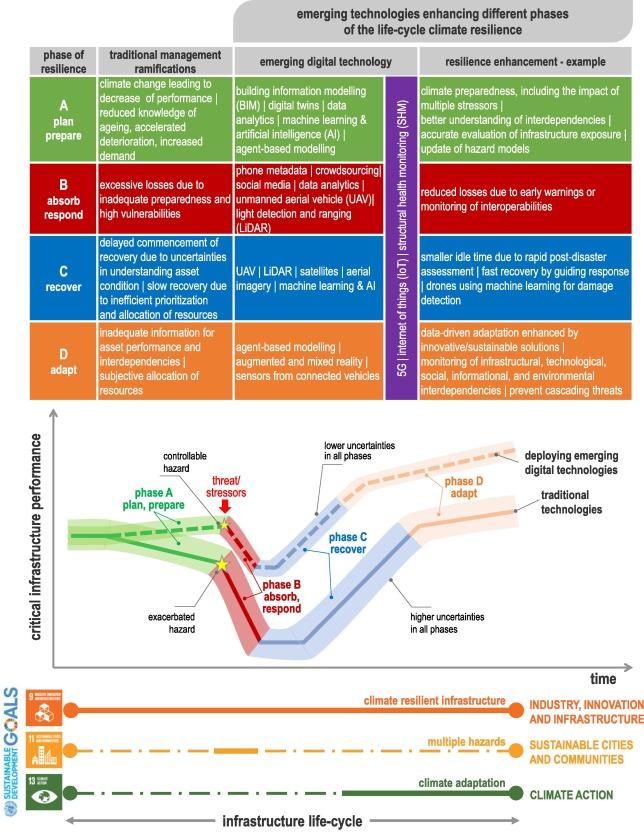When disaster strikes, the fragile threads that connect communities to critical information can easily unravel. In these moments of chaos, resilient technology infrastructure becomes more than just a convenience-it transforms into a lifeline. Building such robust systems in disaster zones is a complex challenge, demanding innovation, foresight, and adaptability. This article explores the essential strategies and emerging technologies that empower emergency responders and affected populations alike, ensuring that even amidst devastation, communication, data, and services remain steadfast and reliable.
Table of Contents
- Understanding the Unique Challenges of Disaster Zone Environments
- Designing for Redundancy and Rapid Recovery
- Leveraging Edge Computing to Minimize Downtime
- Implementing Scalable and Modular Network Architectures
- Prioritizing Security and Data Integrity in Crisis Situations
- Frequently Asked Questions
- Closing Remarks

Understanding the Unique Challenges of Disaster Zone Environments
Disaster zones present a unique set of environmental and logistical challenges that push conventional technology infrastructure to its limits. From unpredictable weather conditions to damaged communication networks, the harsh realities demand solutions that are both adaptive and robust. Unlike standard environments, these areas often lack reliable power sources, stable internet connectivity, and physical safety for equipment, making the deployment and maintenance of technology far more complex.
One of the most pressing obstacles is the inconsistent power supply. Solar panels may be obstructed by debris or atmospheric conditions, while fuel-based generators require constant refueling efforts, which might be impossible during ongoing emergencies. Additionally, the physical terrain-ranging from flooded urban landscapes to remote mountainous regions-presents significant barriers to installing and servicing infrastructure.
Communication is another critical hurdle. Networks can be completely wiped out or overwhelmed by sudden spikes in demand. This necessitates the use of decentralized, mesh, or satellite communication systems that can operate independently of traditional cell towers or cables. Designing technology that can self-heal or reroute data dynamically ensures continuity when conventional paths fail.
- Environmental volatility: Extreme weather, unstable ground, and debris.
- Resource scarcity: Limited power, water, and maintenance personnel.
- Security risks: Theft, vandalism, and operational hazards.
- Rapid deployment needs: Time-sensitive setup and scalability.
| Challenge | Impact on Infrastructure | Mitigation Strategy |
|---|---|---|
| Power outages | System downtime and data loss | Hybrid solar and battery backups |
| Network failure | Communication blackouts | Mesh networks and satellite links |
| Physical damage | Hardware destruction | Ruggedized, portable equipment |
| Limited access | Delayed repairs | Remote monitoring and automation |

Designing for Redundancy and Rapid Recovery
In environments where uncertainty is the only constant, creating systems that can withstand failures without collapsing is paramount. This means embedding redundancy at every critical juncture-from power supplies to data storage, and network paths. By duplicating vital components, we ensure that if one node falters, another seamlessly takes over, maintaining operational continuity without interruption.
Rapid recovery hinges not just on backup resources, but on intelligent orchestration. Automated failover mechanisms paired with real-time monitoring can detect anomalies instantly and trigger predefined recovery protocols. This dynamic response minimizes downtime and reduces the manual intervention needed during high-pressure scenarios.
- Geographically dispersed data centers: to safeguard against localized disasters.
- Multi-layered network routes: preventing single points of failure.
- Automated snapshot backups: allowing quick rollback to stable states.
| Component | Redundancy Strategy | Recovery Time Objective (RTO) |
|---|---|---|
| Power Supply | Dual UPS with battery and generator backup | Under 5 minutes |
| Data Storage | RAID arrays & offsite replication | Less than 15 minutes |
| Network Connectivity | Multiple ISPs with automatic failover | Instantaneous switch |
Leveraging Edge Computing to Minimize Downtime
In environments where every second counts, processing data closer to the source is no longer optional-it’s essential. By distributing computational power to the network’s edge, devices in disaster zones can operate with reduced latency and enhanced reliability. This localized data processing ensures critical systems remain functional even when connectivity to centralized servers is compromised or entirely lost.
Key advantages of this approach include:
- Rapid decision-making: Instant analytics enable immediate responses to evolving conditions.
- Bandwidth conservation: Only essential data is transmitted to central hubs, reducing network strain.
- Enhanced fault tolerance: Local nodes can continue operating autonomously during network outages.
Integrating edge computing also means deploying ruggedized micro data centers and intelligent gateways that adapt dynamically to fluctuating power and environmental challenges. These nodes form a resilient mesh, capable of rerouting tasks and balancing loads, significantly reducing the risk of prolonged downtime during crises.
| Feature | Traditional Cloud | Edge Computing |
|---|---|---|
| Latency | High | Low |
| Reliability in Connectivity Loss | Low | High |
| Bandwidth Usage | High | Optimized |
| Scalability | Centralized | Distributed |

Implementing Scalable and Modular Network Architectures
Designing network infrastructure capable of flexing to the unpredictable demands of disaster zones requires a thoughtful balance between scalability and modularity. By breaking down complex systems into interchangeable, self-contained units, organizations can rapidly deploy, upgrade, or repair networks without halting critical communications. This modularity not only accelerates response times but also reduces the risk of cascading failures when components malfunction under stress.
At the heart of this approach lies the concept of layering. Each layer-from physical hardware to software-defined networking-can be independently scaled or adapted. For example, adding more nodes to a mesh network or swapping out a router module can be done with minimal disruption. This adaptability is essential when infrastructure must evolve in real time to accommodate shifting disaster site requirements or fluctuating user loads.
Key strategies include:
- Utilizing standardized interfaces to ensure seamless integration between diverse hardware and software components.
- Implementing containerized network functions that can be quickly deployed on edge devices.
- Employing automated orchestration tools to manage and scale network resources dynamically.
| Component | Modularity Benefit | Scalability Aspect |
|---|---|---|
| Edge Routers | Hot-swappable modules | Expand node density on demand |
| Network Controllers | Centralized management | Dynamic policy enforcement |
| Wireless Access Points | Interoperable standards | Flexible coverage expansion |
By implementing these design principles, disaster zone networks can evolve organically, matching the pace of recovery efforts while maintaining reliability and security. This results in a resilient backbone that supports critical communications when every second counts.
Prioritizing Security and Data Integrity in Crisis Situations
In emergency environments where chaos and unpredictability reign, safeguarding sensitive information becomes paramount. Systems must be designed not only to withstand physical challenges but to ensure that data remains uncorrupted and accessible under the most adverse conditions. Employing robust encryption protocols and multi-factor authentication can create layers of defense that deter unauthorized access while preserving the confidentiality of critical information.
Moreover, incorporating decentralized data storage solutions helps mitigate risks associated with single points of failure. By distributing data across multiple secure nodes, organizations can maintain continuous operations even when parts of the infrastructure are compromised. This redundancy is vital in disaster zones where connectivity and power can be erratic.
- Real-time data validation: Ensures accuracy and prevents erroneous entries during high-pressure scenarios.
- Automated backup schedules: Minimizes data loss by capturing frequent snapshots of critical information.
- Role-based access controls: Limits exposure by granting permissions strictly on a need-to-know basis.
| Security Feature | Benefit | Implementation Priority |
|---|---|---|
| End-to-End Encryption | Protects data in transit and at rest | High |
| Decentralized Storage | Ensures availability despite localized failures | Medium |
| Access Auditing | Tracks and detects unauthorized activities | High |
Frequently Asked Questions
Q&A: Building Resilient Tech Infrastructure for Disaster Zones
Q1: Why is building resilient tech infrastructure crucial in disaster zones?
A1: Disaster zones face extreme challenges-power outages, damaged communication lines, and unpredictable conditions. Resilient tech infrastructure ensures that critical systems remain operational, enabling efficient emergency response, real-time communication, and rapid recovery efforts. Without it, aid coordination falters, and lives may be lost.
Q2: What are the key components of resilient tech infrastructure in these areas?
A2: The backbone includes robust power supplies (like solar or portable generators), decentralized communication networks (mesh networks, satellite links), rugged hardware designed to withstand harsh environments, and adaptive software systems that can operate offline or with intermittent connectivity.
Q3: How does decentralization improve resilience?
A3: Centralized systems are vulnerable; if one hub fails, the entire network can collapse. Decentralization distributes data and control across multiple nodes, so if some parts go down, others keep functioning. This redundancy is vital when infrastructure is damaged or inaccessible.
Q4: What role does renewable energy play in these setups?
A4: Renewable energy sources, particularly solar power, provide sustainable and independent electricity crucial in disaster zones where the grid may be destroyed. Portable solar panels and battery storage enable continuous operation of communication devices and medical equipment without relying on unstable fuel supplies.
Q5: Can you give examples of technologies successfully used in disaster zones?
A5: Yes, mesh networking devices have been deployed to restore internet access after hurricanes. Portable satellite terminals enable remote clinics to connect with hospitals. Drones equipped with sensors survey damage and locate survivors, feeding data into resilient networks for quick action.
Q6: What challenges do engineers face when designing these systems?
A6: Engineers must anticipate extreme weather, limited resources, and unpredictable user needs. They balance durability with portability, affordability with performance, and simplicity with functionality. Ensuring systems are user-friendly for responders under stress is also critical.
Q7: How does community involvement influence the success of tech infrastructure in disaster zones?
A7: Local communities provide invaluable knowledge about terrain, climate, and cultural needs. Training locals to operate and maintain technology fosters ownership and sustainability. Moreover, community-driven solutions tend to be more adaptable and trusted during crises.
Q8: What future innovations could enhance resilience further?
A8: Advances in AI for predictive analytics, self-healing networks, and energy-harvesting materials promise smarter and more autonomous systems. Integration of blockchain for secure, transparent data sharing and expanded use of low-earth orbit satellites could dramatically improve connectivity and coordination.
Q9: How can governments and organizations support the development of resilient tech infrastructure?
A9: By investing in research, fostering public-private partnerships, and establishing standards for interoperability and durability. Funding training programs and encouraging inclusive planning ensures technologies meet real-world needs and can be rapidly deployed when disaster strikes.
Q10: What is the ultimate goal of building resilient tech infrastructure in disaster zones?
A10: To save lives, reduce suffering, and accelerate recovery by ensuring that critical communication and operational systems remain functional no matter the crisis. Resilience in technology translates directly into resilience in communities facing the unpredictable forces of nature.
Closing Remarks
As the frequency and severity of disasters continue to challenge communities worldwide, the imperative to build resilient tech infrastructure has never been clearer. These systems are more than just networks and devices; they are lifelines that sustain communication, coordinate relief, and rebuild hope in the face of devastation. By investing in robust, adaptable technologies tailored for disaster zones, we not only safeguard critical services but also empower vulnerable populations to recover stronger and faster. In the end, resilience is not just about withstanding the storm-it’s about emerging from it smarter, connected, and ready for whatever comes next.
